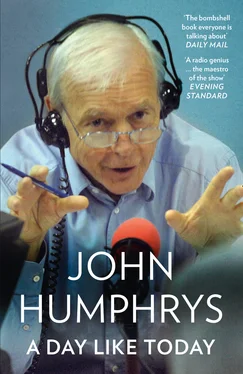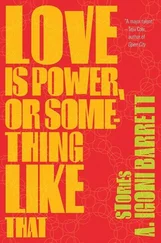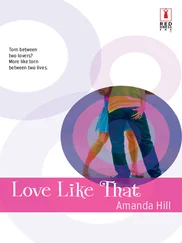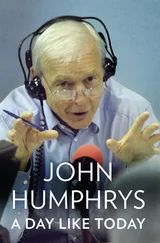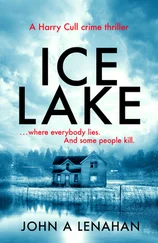Those, as I said, were the dark ages for television news. If, God forbid, there were to be another military coup in Chile tomorrow the pictures would start appearing on our television screens within minutes.
In fact, things had already begun to change when I was based in Washington in the mid-1970s. The first electronic news-gathering (ENG) cameras were appearing. They were great clunky things but they had one massive advantage over the cameras we’d been using since the first motion pictures were invented in the 1880s. No film. They transformed the way we covered stories. A roll of film on our news cameras lasted for just over ten minutes, so you had to be very careful when you switched on and when you switched off. And Sod’s Law dictated that the moment you switched off was when the bomb blew up or the Queen slipped on the banana skin.
But you spent your life terrified that you would miss the one moment that mattered. You would also get a bollocking from the boss if you used too much film – partly because it all had to be developed, which took time back at base, but mostly because it was very expensive. And there was the other fear. The hair in the gate. No matter how careful the cameraman was when he loaded a new roll (always a ‘he’ incidentally: I never once worked with a camerawoman) he could never be a hundred per cent certain that a little hair had not managed to find its way into the gap between the film and the lens. You could tell when it happened if you were passing the edit suite just after the film had come back from the lab. The cry from an anguished reporter of ‘Oh fuck! There’s a fucking hair in the gate!’ It made the film unusable.
No such problem with ENG cameras. No film: no hairs in gates. And, pretty soon, with the blessing of satellite transmission, no need to find helpful passengers in foreign airports willing to courier your film back to London so that it could be processed and edited. Why use passengers? Because by the time you got to the airport it was usually too late to send it by freight, and anyway passengers were much more reliable.
By the early 1970s geostationary satellites were in use and in May 1974 the world’s first direct broadcasting satellite (DBS) was launched. So now we had pictures that needed no processing and a way of getting them back to London instantaneously – albeit very expensively in those early days. A ten-minute sat-feed from Washington cost $10,000. All that was overtaken with the birth of the digital age. Instead of lugging great onion bags bulging with cans of film and endlessly worrying about running out, you had a few tiny disks and virtually unlimited airtime in your pocket. One of the unintended consequences of that is the temptation when you’re on an assignment to film pretty much everything that moves. So you end up back at base with endless hours of material all of which has to be viewed – and what no one has yet invented is the computer program in the editing suite that will eliminate all the boring stuff instantly and keep the good stuff. It’s probably on its way.
The biggest problem facing the editor back home now is not how to get a story covered and the footage safely back to base, but how to distinguish between the mass of material that appears almost instantly on social media in one form or another. If it’s a natural disaster – an earthquake or a tsunami – it’s pretty straightforward. But if it is, say, a terrorist attack you have to know who was filming. The role of us broadcasting hacks has changed beyond recognition too – and I’m not talking just about the way reporters are used in television news.
In those days, as a foreign correspondent, I could put a report on a homeward-bound plane and wait for the call from the foreign desk, secure in the knowledge that several days might pass before I might be disturbed again. This meant the pace of news was entirely different from today. A film needed to be processed in a chemical bath for the print to be developed. Then the film had to be edited in the old-fashioned way: it was broken up into its constituent shots, and the strips of film hung up in the editing suite. The picture editor would edit the selected shots together on a Steenbeck – a reel-to-reel viewing machine. All this took time.
Today we all have telephones so packed with technology they can not only do the job of the camera but also replace the need for a satellite station. And along with the advent of digital technology came computerised editing, so it no longer takes ‘real time’ to do an edit. A thirty-second ENG clip would take thirty seconds to lay down for the edit. On a computer, it can be done in the blink of an eye.
All of this would have been the stuff of fairy tales in my early reporting years. Occasionally you will hear old hacks reminiscing about the good old days of black and white film and how vastly superior the pictures were when shot on a proper cine camera by a highly trained cameraman rather than by any ten-year-old with a shaky mobile, but the truth is we’d have given our eye teeth for it. Very little happens in one part of the world today without the rest of the world being able to see it minutes later. But I am not suggesting that this is an unalloyed blessing. Technology has solved many problems but it has raised many questions too about the role of international news organisations.
The BBC in particular has had to face the challenge of new technology by asking what it means for the way the organisation is structured and how best it can position itself to retain a big enough audience to justify the licence fee. It’s made many attempts to get its structure right but somehow it never quite seems to work. Perhaps there is no right answer.
When BBC Television News moved from its early home in Alexandra Palace to the new Television Centre in London in the early 1970s there were no television foreign correspondents based abroad. There was a network of radio correspondents, but no foreign television news bureaux. You might think that the simplest answer to that would have been to train radio correspondents in the ways of television. I have yet to meet a good radio reporter who is not also capable of delivering a good television report. Then again, I’m not a boss. Bosses think differently. Many of them see their purpose as either building their own empires or taking over someone else’s empire. That’s not necessarily an ignoble aspiration but the effect on BBC News was that we ended up with two distinct empires – radio and television – and, almost half a century later, I’m damned if I can see why.
What happened in the BBC in the early 1970s was that two separate cultures were encouraged to develop: radio and television. That meant two different satrapies, each with its own boss, management structure and team of journalists – and crucially, each with its own budget. Television, for entirely obvious reasons, had much more money than radio and, equally obviously, was seen as more glamorous. Television wanted to create its own stars.
So a corps of television foreign correspondents was formed. In the early 1970s four were appointed to cover the world: one based in the Far East, one in Europe, one in East Africa and one in the United States. I won Washington.
In 1987, John Birt became deputy director general of the BBC, in charge of news and current affairs, and he tried to change all that. He had quite a fight on his hands: forcing radical change on an organisation, many of whose bosses enjoyed living in the past. It was more comfortable there. But he did it. He established the specialist journalist posts on which BBC News is still founded and insisted that correspondents should work for both TV and radio – he called it ‘bi-medialism’. He also thought the BBC had ‘starved’ TV news of resources. He pushed news and current affairs together into one directorate. They did not go willingly.
Читать дальше
